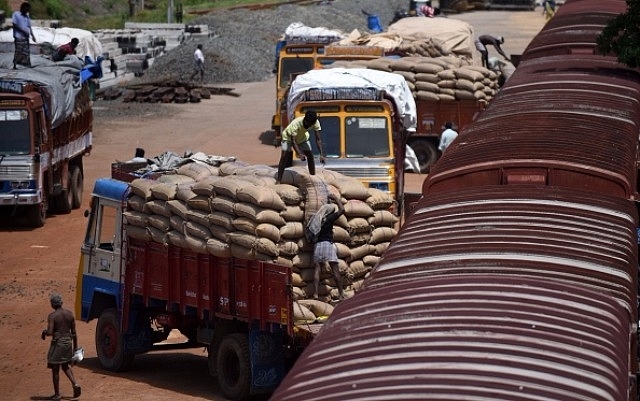Economy
Don’t Blame DeMo Alone For GDP Slide; There Are Many Other Factors At Work
- Discussed here are at least four other factors besides demonetisation that have been at play in affecting the GDP growth slowdown.

The implementation of the goods and services tax certainly played its part in the GDP growth slide. (ARUN SANKAR/AFP/Getty Images)
The drop in GDP growth to 5.7 per cent during April-June 2017, the first quarter of the current financial year, should be a cause for concern, but it is tough to blame it all on demonetisation.
This is because at least four other factors have been at play in the slowdown, not just demonetisation.
First, the last-quarter GDP growth drop is as much the impact of another disruptive move, the implementation of the goods and services tax (GST) from 1 July, as the lag effects of demonetisation. In June, most companies went in for massive destocking operations in order to begin GST on a clean slate. This means restocking should happen from July onwards, picking up steam in August and September. The revival in the August Nikkei Purchasing Managers’ Index, from 47.9 in July to 51.2, means that restocking is underway after one month of adjustment to the GST regime. Any number above 50 indicates expansion.
Third, there is inertia. The problem of slowdown predates demonetisation by at least two quarters. In January-March 2016, GDP growth peaked at 9.2 per cent, but fell to 7.9 per cent in the first quarter of 2016-17, and further to 7.5 per cent in the second (July-September 2017). Put simply, the growth rate fell by 1.7 per cent in the six months between the last quarter of 2015-17 and the second quarter of 2016-17. If we assume this rate of decline continuing, another 1.4 per cent fall over the next six months (that is, by March 2017) could have been predicted, and that is exactly what the GDP number showed: it fell from 7.5 per cent in the second quarter to 6.1 per cent in the fourth, when the demonetisation impact was huge. The revival that could have taken place in this downward trend was probably neutralised by demonetisation.
Fourth, there is the diminishing impact of public investment in infrastructure, the result of the United Progressive Alliance’s growth-depleting Land Acquisition Act. An Indian Express report notes that the cost of acquisition per hectare of land acquired for building national highways went up from Rs 0.9 crore in 2013-14 (the last year of UPA) to Rs 2.05 crore two years later. The simple takeout: when costs double, the net growth impact of every rupee of public investment halves, since the bulk of the investment goes into filling the pockets of a handful of landowners. Says the Express report: “Land cost, which used to be 10 percent of the total project cost about a decade ago, is now more than 100 percent of the civil cost. The sharpest rise in land prices has been seen in Maharashtra, Punjab and Haryana.”
The big question is whether the worst is over, or whether there is worse to come as banks start facing the costs of writing off loans and liquidation of companies.
Introducing ElectionsHQ + 50 Ground Reports Project
The 2024 elections might seem easy to guess, but there are some important questions that shouldn't be missed.
Do freebies still sway voters? Do people prioritise infrastructure when voting? How will Punjab vote?
The answers to these questions provide great insights into where we, as a country, are headed in the years to come.
Swarajya is starting a project with an aim to do 50 solid ground stories and a smart commentary service on WhatsApp, a one-of-a-kind. We'd love your support during this election season.
Click below to contribute.
Latest